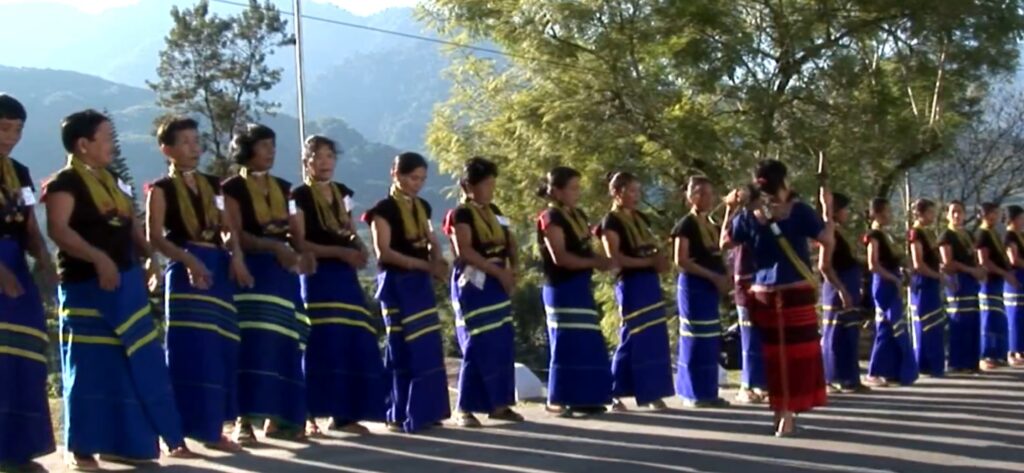Ponung folk dance is a popular dance of Arunachal Pradesh. It belongs to the Adi tribe. This tribe is known for many of its traditional folk dances. Ponung dance is an important religious celebration for the Adi tribe.

Purpose of the Ponung Dance
The Adi tribe is a very religious tribe. The Ponung folk dance is performed to pray to god just before the harvest period. This tribe primarily depends on agriculture for a livelihood. The festival takes place in the first week of September.
Two significant events of the festival include the sacrifice of Esos and the Ponung dance. The dance is performed only by women of the tribe. They dance, wishing for a good harvest of the food crops, and the overall well-being of their families and the community.
Dance Performance
The dancing young girls and women form a circle. The Ponung dancers place their hands on each other’s shoulders as they perform the steps. In some cases, they hold hands to form the circle. There is only one male who takes part in the show. This man is known as the Miri. He stands in the centre of the circle formed by the women and sings a folk song, which is the only music to which the women dance. The song narrates information about the origin of the crops they harvest, the history of the Adis, and much more.
The Miri also plays a musical instrument called the Yoksha. It is shaped in the form of a sword and is shaken by the Miri as he sings along. Discs of iron are loosely attached to this sword-like Yoksha, which produces a rattling sound. The Ponung dance steps are simple. The women move in the circle in rhythm.
Costume In The Dance
In the Ponung folk dance, the women dress up in traditional attire. On top, they wear a black shirt or blouse. On the bottom, a skirt is wrapped around the waist, and it goes down up to the ankles. The skirts usually have broad horizontal stripes matching the blouse. On the head, these women wear a conical hat cloaked in a cloth that trails behind.
To complete the look, the women adorn themselves with traditional style jewelry. Long chains attached with small circular sequences are worn around the neck. These are paired with other colorful neckpieces of various other metals.

Pingback: All Folk Dances of India - Auchitya